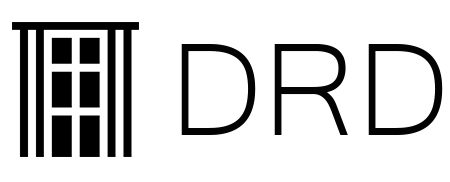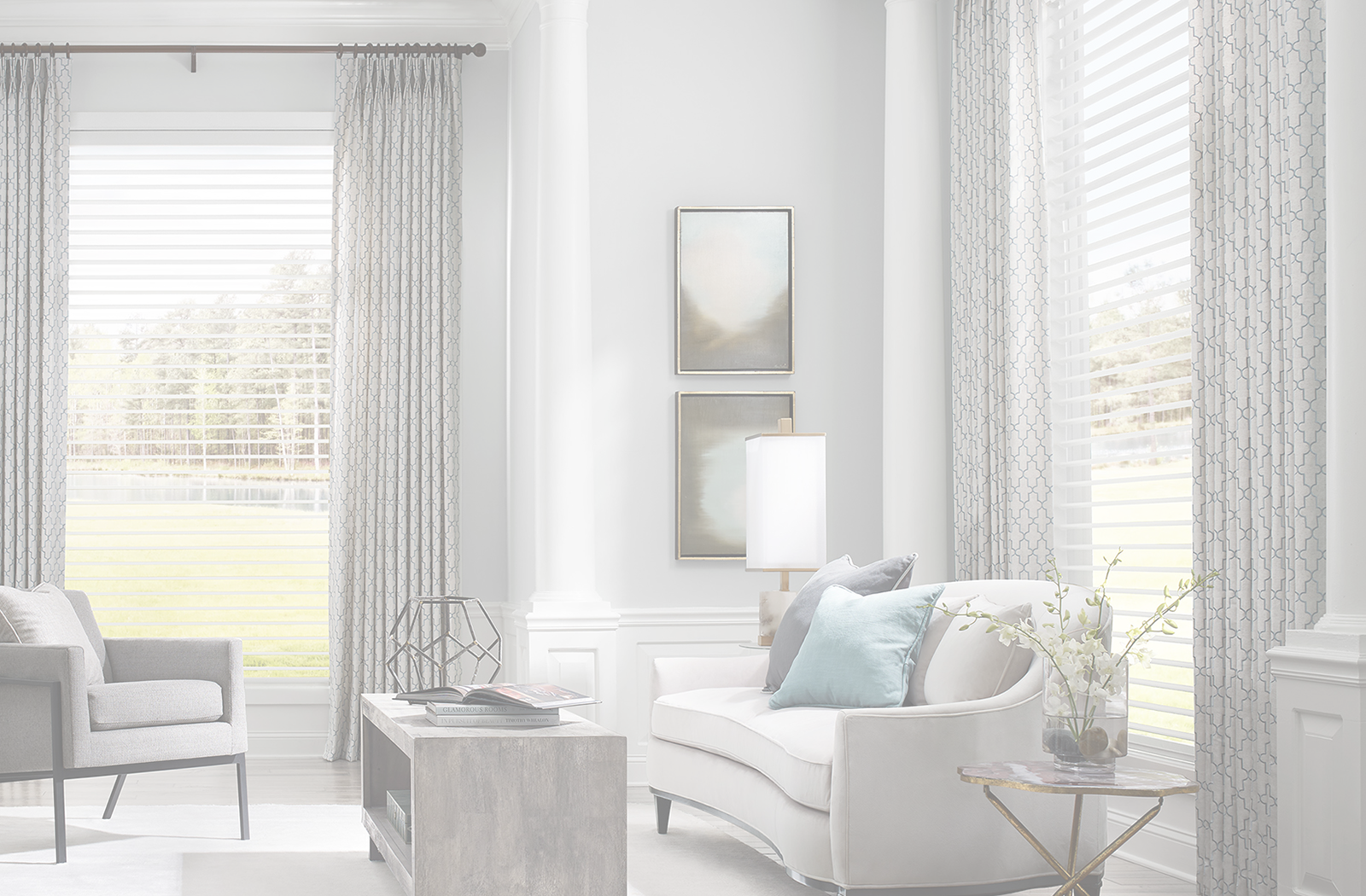Decorative Drapery Hardware Selection Guide
When shopping for drapery rods, you should first to consider the type of curtains you will be using. Finding the correct curtain rod depends on the drapery style, for example, pinch pleat draperies may be used on decorative rods with rings or traverse rods with carriers while grommet draperies can only be used on smaller diameter decorative rods. Ripplefold draperies only function properly when used with decorative traverse rods or basic traverse rods containing Ripplefold carriers.
SELECTING DRAPERY HARDWARE
Curtain Rods and Poles:
Begin by selecting the type of rod (wood, metal or wrought iron) and the diameter needed for your space.
The question of whether to use metal or wood drapery hardware is a matter of personal choice. Generally, metal rods give a more contemporary look while wood rods tend toward the traditional. Finial choice can also affect the look and feel of a rod.
“Diameter” refers to the width of the cross section of the rod. For most installations 1 3/8” rods are sufficient, however, rooms with a ceiling height of 10 feet or more may benefit from the hefty look of a 2” diameter pole.
After selecting the diameter of the pole, choose the length. Some metal poles are telescopic, meaning the rods are made of two or more sections that slide to reach any length within a range. For example, a 66 – 120” rod could be set at any point from 66” wide all the way up to 120”.
Fixed-width poles may also be used. These rods are made in one piece at a specified length, for example, 6 feet long. When selecting a fixed-width rod, choose a size option the same size you need or longer. Fixed-width rods can be cut down by you or your installer if you need a shorter rod. If you need a rod wider than offered, these rods can be joined together to make longer rods. Please note that anytime a pole is “spliced,” a bracket must be placed under the joint for external support.
The size of your window and the type rod you select will determine the number of brackets needed. Here are a few guidelines:
Kirsch 1 3/8” Wood Trends Poles: Two brackets are sufficient for a rod up to 60” in length. We recommend a third bracket placed in the center for poles over 60”. When joining two wood poles with a wood pole connector screw, a bracket must also be placed under the joint for support.
Kirsch 2” Wood Poles: Two brackets are sufficient up to a width of 96”. Many customers prefer to use a center bracket at 96”, whether for aesthetics or as additional support. We recommend a center bracket for 2” Wood Poles over 96”. As with 1 3/8” wood rods, if Wood Rods are joined with a connector screw to make longer rods, a bracket must be placed beneath the joint for support.
Designer Metals 1 3/8” Poles: All Designer Metals telescoping poles come with brackets. Additional brackets will not be necessary unless you need bypass brackets and rings which allow you to move the drapery from one end of the rod to the other. If this is the case, you will need to make sure the bypass bracket style matches the end bracket style for the brackets to work properly, for example, if you choose Designer Metals Decorative Bypass Brackets, the end brackets should be Designer Metals Decorative Brackets. Designer Metals Fixed-Width Poles do not come with brackets. We suggest using two brackets for widths up to 60” and three brackets for widths up to 96”. Fixed-Width Rods can be splice using Internal Rod Splices and must use a bracket under the splice.
Kirsch Wrought Iron 1” and 1 3/8” Poles: Like the 2” Wood Poles, Wrought Iron 1” and 1 3/8” poles can span up to 96” using 2 brackets. Rods over 96” will require an Internal Rod Splice with a bracket underneath for external support.
Finials or Endcaps
Finials and endcaps are used to finish the ends of a rod. Finials are generally a more decorative option. Styles vary and should be chosen to enhance the room décor. Finials come in several different sizes and diameters. It is best to check the product page for any finial to be sure the finial will fit in the space allowed.
Endcaps are usually small and simple solutions for decorating the ends of the rods. Endcaps are most often flat disks slightly wider than the rod and only about 1” in length.
In addition to the decorative nature, finials and endcaps provide a stop to keep rings from sliding off the rod ends.
Rings
Rings are only necessary for use on decorative rods with pleated and flat panel draperies. Grommet panels, rod pocket, tab or back tab drapery styles do not require rings.
For pleated drapery, count the number of pleats and add one additional ring for the lead edge to determine the number needed. Flat panel draperies will need a ring at the lead edge and every 4 – 6” along the width of the drapery panel.
WHICH TYPE OF DRAPERY HARDWARE WILL I NEED?
Determining the type of drapery hardware you will need for the style of drapery you are using should not be too confusing if you follow a few simple guidelines:
DRAPERY STYLE
Generally, the style of drapery you have chosen will dictate the rod type. Some drapery styles, such as Grommet Panels, Rod Pocket, Tab Top, or Back Tab draperies can only be used on rods without rings. These rods can be basic or decorative but they must be of a size that will accommodate the drapery.
Grommet Draperies
Grommet draperies have a series of reinforced holes along the top edge of the fabric panel. The rod will thread into these holes and must measure smaller that the inside diameter of the openings. Rods with a diameter of 1” or 1 3/8” work best with most grommet sizes. Decorative rods with finials are a good choice because the rod will be visible when this type of drapery is used.
Rod Pocket Draperies
Rod pocket draperies are flat panels that have a channel or tunnel stitched close to the top of the panel. They can be used on basic adjustable rods or decorative rods. Ideally, the rods should measure 1” in diameter for most rod pocket applications. An important item to remember: when using a round rod for rod pockets, the channel through which the rod runs must be at least twice the diameter of the rod. For example, a 1” diameter rod would fit into a rod pocket which measures 2” from the channel’s top stitching line to the bottom stitching line. A 1 3/8” rod would require the pocket to measure no less than 2 2/4” ( 2 x 1 3/8” = 2 ¾”).
Tab Top and Back Tab Draperies
Tab Top and Back Tab drapery styles are essentially flat panels with loops of fabric sewn either to the top (Tab Top) or behind the upper edge (Back Tab). Tab Top, like Grommet Panels, are best installed on a decorative rod with finials since the rod is always visible. Back Tab draperies are very versatile and can use either decorative or basic drapery rods because the rods remain hidden behind the panel.
Pleated Draperies
Pleated drapes can be displayed using traverse rods or decorative rods with rings. Drapery pins or hooks are attached into the back of each pleat. The hook is then threaded into an eyelet at the bottom of a drapery ring or into a carrier in a traverse rod. In either case, the placement of the drapery pin should be adjusted so that the top of the drapery panel just touches the bottom of large ring or just below the traverse rod.
Ripplefold Draperies
Ripplefold draperies are custom-made draperies that 'snap' into carriers on a Ripplefold drapery rod. The drapery and rod must be an exact match. Ripplefold draperies are offered in four fullnesses: 60% (1.6:1 of rod width), 80% (1.8:1 of rod width), 100% (2:1 of rod width), and 120% (2.2:1 of rod width). Ordering Ripplefold draperies and rods can be complicated. Feel free to call us with any questions.
When you begin with a specific drapery style in mind, choosing the drapery hardware becomes much easier. Call the Customer Service Team at DRD. We're happy to help with all of your drapery and hardware related questions.

